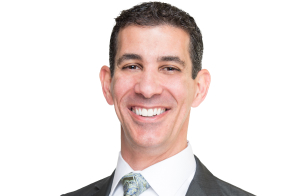Acute care is high-stakes medicine. Lives and futures depend on clinicians’ skills and actions. So as healthcare leaders, we owe it to the patients we serve to never stop innovating.
Innovation is truly the heart of better care. Healthcare technology advances like teleneurology can allow stroke patients to receive care at local EDs instead of being transported an hour away. And new protocols like medication-assisted treatment can start patients with substance use disorder on the road to recovery rather than returning them to their addiction.
The good news is that innovation need not be capital- or resource-intensive. Some of the best ideas for improving care delivery come from front-line physicians and advanced providers. These clinicians understand better than anyone both the needs of patients and the constraints of the hospital.
The secret to fostering healthcare innovation is to engage your medical staff and empower them to bring great ideas to life. Here are some tips on partnering with your physicians to drive innovation.
STEP 1: Create an unbeatable culture.
Culture is probably the greatest predictor of how an organization will handle adversity. A strong culture allows your hospital to attract and retain bright, creative, driven providers—even in a tight job market. Culture also creates safe spaces where clinicians can raise both concerns about care delivery and potential solutions.
As a healthcare leader, how do you begin to build a great culture? Start by focusing everyone in the organization on the patient. In an era rife with administrative tasks and burdens, connecting with patients helps clinicians to rekindle their joy in practicing medicine.
The Vituity-led ED at Emory Decatur Hospital (Georgia) serves a challenging population with relatively few resources while maintaining a 98% clinician retention rate. This frenetically busy ED is fully staffed with hires from top programs and even has a waiting list for new hires.
Medical Director Sofia Khan, MD, attributes this remarkable loyalty to the team’s culture, which focuses on patient experience, provider education, and service to the local community. “Vituity’s democratic culture is a major selling point,” she says.
Takeaway: Ideas flow freely—even across traditionally siloed departments—when clinicians are united in the goal of relieving suffering through high-quality, compassionate care.
STEP 2: Create safe spaces for innovation in healthcare.
Innovation requires a certain amount of trial and error. However, it’s hard to “experiment” in a hospital environment, where failure could be deadly. To innovate safely, front-line providers need protected time that allows them to step outside their daily patient care routines.
At Vituity, Rick Newell, MD, leads a team focused on developing and implementing innovative approaches to care delivery. Under his leadership, Vituity’s culture is known for offering providers safe spaces to solve for healthcare’s most pressing challenges.
One standout example of this approach is Vituity’s Innovation Grant program. Innovation grants provide financial and resource support to teams and individuals to help them develop promising solutions to their hospital’s problems. These programs have helped Vituity teams implement innovations like point-of-care ultrasound, team resuscitation, patient navigation, and even a street outreach team equipped for telehealth.
Takeaway: Consider creating a structured “innovation program” that provides time (and if available, resources) to providers with promising solutions to organizational problems.
STEP 3: Recognize and empower physician innovators.
Lack of buy-in among front-line clinicians can be a major barrier to innovation. However, when it comes to spreading new ideas, physicians inspire physicians. Physician-driven innovation is therefore one of the fastest and easiest ways to spark organizational change.
Healthcare leaders can foster change by empowering innovative clinicians to share their successes. Offer these “innovation ambassadors” protected time for presenting, teaching, mentoring, and consulting with fellow clinical leaders. It’s also important to publicly recognize the contributions of your front-line innovators at every opportunity.
Clinician champions played a huge role in spreading Vituity’s Rapid Medical Evaluation (RME)® program across the organization. RME was originally developed by an ED medical director and refined by Vituity practice management consultants. To gain buy-in for the new program, the partnership flew teams to RME demonstration sites. Watching their peers in action inspired many Vituity teams across the country to adopt RME.
Takeaway: Rather than innovating from the top down, empower clinicians to become forces for change in your organization. Use clinician “ambassadors” to gain buy-in and spread promising ideas to their peers.
Place healthcare innovation at the heart of better care
Healthcare innovation doesn’t always require mountains of resources or capital. In fact, your best resources for innovation are almost always your front-line clinicians. Your role as a healthcare leader is simply to create an environment where great ideas are surfaced, valued, and acted upon. This approach serves both patients and physicians while placing innovation squarely at the heart of better care.
For more tips on fostering innovation at your hospital and health system, download Vituity’s Hospital Innovation Guide.























